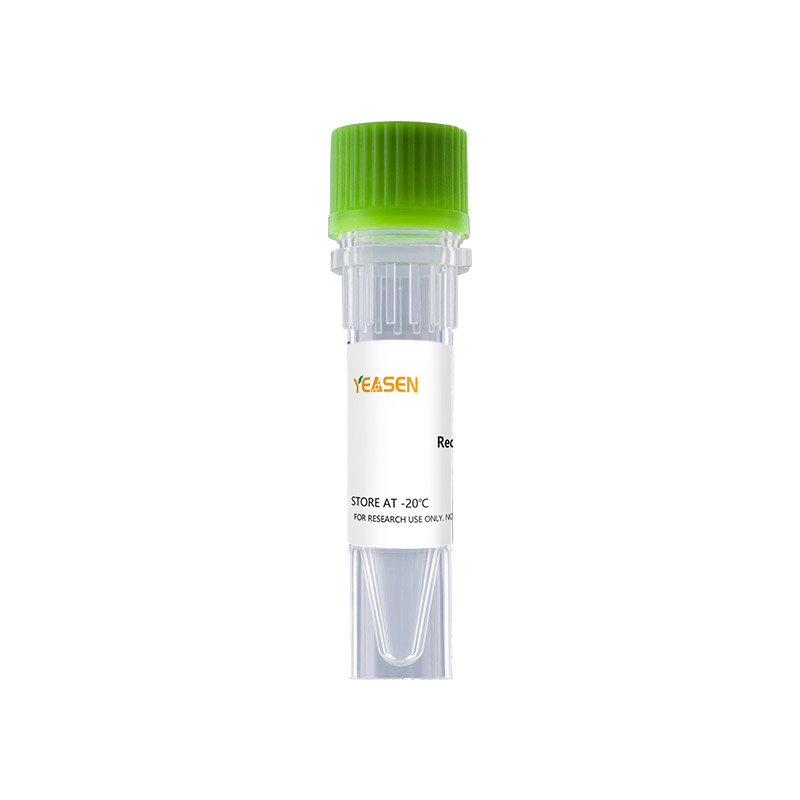

產(chǎn)品說明書
FAQ
COA
已發(fā)表文獻
Interleukin-5 (IL-5) is a secreted glycoprotein that belongs to the alpha -helical group of cytokines. Unlike other family members, it is present as a covalently linked antiparallel dimer. The cDNA for mouse IL5 encodes a signal peptide and a 113 amino acid (aa) mature protein. Mature mouse IL5 shares 70%, 94%, 58%, 66%, 59% and 63%, aa sequence identity with human, rat, canine, equine, feline and porcine IL-5, respectively, and shows cross-reactivity with human IL-5 receptor. IL-5 is primarily produced by CD4+ Th2 cells, but also by activated eosinophils, mast cells, EBV-transformed B cells, Reed-Sternberg cells in Hodgkin’s disease, and IL-2-stimulated invariant natural killer T cells(iNKT). IL-5 increases production and mobilization of eosinophils and CD34+ progenitors from the bone marrow and causes maturation of eosinophil precursors outside the bone marrow. The receptor for human IL-5, mainly expressed by eosinophils, but also found on basophils and mast cells, consists of a unique ligand-binding subunit (IL-5 R alpha ) and a shared signaltransducing subunit, beta c. IL-5 R alpha first binds IL-5 at low affinity, then associates with preformed beta c dimers, forming a high-affinity receptor. IL-5 also binds proteoglycans, potentially enhancing its activity. Soluble forms of IL-5 R alpha antagonize IL-5 and can be found in vivo. In humans, IL-5 primarily affects cells of the eosinophilic lineage, and promotes their differentiation, maturation, activation, migration and survival, while in mice IL-5 also enhances Ig class switching and release from B1 cells. IL-5 also promotes differentiation of basophils and primes them for histamine and leukotriene release.
Product Properties
|
Synonyms |
BCGFII; EDF; Eo-CSF |
|
Accession |
P04401 |
|
GeneID |
16191 |
|
Source |
E.coli-derived Mouse IL-5, Met21-Gly133, with an N-terminal Met. |
|
Molecular Weight |
Approximately 26.2 kDa. |
|
AA Sequence |
MEIPMSTVVK ETLTQLSAHR ALLTSNETMR LPVPTHKNHQ LCIGEIFQGL DILKNQTVRG GTVEMLFQNL SLIKKYIDRQ KEKCGEERRR TRQFLDYLQE FLGVMSTEWA MEG |
|
Tag |
None |
|
Physical Appearance |
Sterile Filtered White lyophilized (freeze-dried) powder. |
|
Purity |
> 98% by SDS-PAGE and HPLC analyses. |
|
Biological Activity |
The ED50 as determined by a cell proliferation assay using human TF-1 cells is less than 2 ng/mL, corresponding to a specific activity of > 5.0 × 105 IU/mg. Fully biologically active when compared to standard. |
|
Endotoxin |
< 0.1 EU per 1μg of the protein by the LAL method. |
|
Formulation |
Lyophilized from a 0.2 μm filtered concentrated solution in 20 mM Tris, pH 9.0, 150 mM NaCl. |
|
Reconstitution |
We recommend that this vial be briefly centrifuged prior to opening to bring the contents to the bottom. Reconstitute in sterile distilled water or aqueous buffer containing 0.1% BSA to a concentration of 0.1-1.0 mg/mL. Stock solutions should be apportioned into working aliquots and stored at ≤ -20°C. Further dilutions should be made in appropriate buffered solutions. |
Shipping and Storage
The products are shipped with ice pack and can be stored at -20℃ to -80℃ for 1 year.
Recommend to aliquot the protein into smaller quantities when first used and avoid repeated freeze-thaw cycles.
Cautions
1. Avoid repeated freeze-thaw cycles.
2. For your safety and health, please wear lab coats and disposable gloves for operation.
3. For research use only!
HB220402

